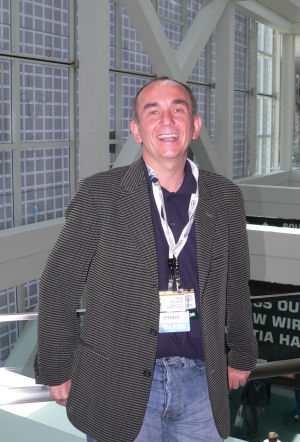Were there clues to the demise of E3?
Los Angeles (CA) - When we learned one month ago that the Electronic Entertainment Expo was to be downsized to a much smaller, single-day gathering of media and marketing officials, some of the analysts with whom we spoke afterwards expressed a certain lack of shock. The prevailing opinion seems to be that E3's demise may speak more about the state of the trade show industry than of the gaming industry, which few believe to be in any serious trouble.
But the demise of COMDEX years earlier was largely blamed on the computer industry, which was seen as suffering from a slump, whose impact was compounded by the after-effects of 9/11. This at a time when attendees and exhibitors alike were complaining about the lack of any real business going on there. Yet if the lack of business at COMDEX was a symptom of bad business, how can we conclude with the same breath that the lack of real business at E3 - a symptom about which there were many complaints, despite high attendance - was a symptom of poor show management? Is there a deeper problem worth addressing, or at least looking for?
Lionhead Studios managing director Peter Molyneux
Molyneux responded to that by noting there seems to be a problem among the marketing divisions of game developers, where if a prospective game's designated genre doesn't appear on TV at the moment, it's a "real slag" for its developer to get it past marketing and into production. "There must be another way," he said. "We in the industry say we need more original ideas, but then, it's almost a Catch-22 situation, because whenever anybody presents an original idea, quite often the research and marketing people will say, 'Well, look, our research shows that people aren't interested in Westerns at the moment.'"
Ubisoft senior producer Julien Gerighty added, "We do a lot of sequels, on a yearly basis, but we try to always inject something completely new. Maybe at another company, there would be less sequels, but at the end of the day, it helps us to renew interest, not only for us but also for journalists or fans out there, and keep people buying games."
When a company like Microsoft has to spend two years or more developing Halo 2, with an enormous amount of investment, Gerighty added, it helps for that game to have a bankable name. "Today, when games are costing more and more," he remarked, "and you can't afford to really waste time, energy, and money on ideas that may be not 100% tested or proven successful, a license for a franchise will help you have that sort of escape chute that may save a lot of [investment]."
It's nice to have that escape chute, but an artist might not always feel more artistic working with a safety net. As Molyneux told TG Daily after the panel concluded, "I've always found it incredibly challenging, doing a sequel. Looking out at what you want to experience again, and rather than doing the same content, and experiencing that sense of wonder, getting that back again, and not saying, 'You've got to have this.'
Get Tom's Hardware's best news and in-depth reviews, straight to your inbox.
"There's one thing missing for me, and that is passion and fear, because when you're going to do anything [innovative], you've got to have passion. And also the fear of doing something new, of actually showing it for the first time, whether it be internally to publishers or externally, is a real motivator for me."
I recalled for Molyneux how, when dramas were produced daily for radio, how they had the most beautiful pictures...because they came from the listener's own head. "It's very interesting that you say that, because personally, I think probably the most horrific piece of entertainment I've ever had was the radio," he responded, using "horrific" in this sense not to refer to its quality, but to its essence. "[In] one of the most horrific plays I've ever seen, 'The Woman in Black,' there was nothing on the set, on stage. It was all in the story. A lot of the time, when [I'm] designing [a game], I design to this feeling that you want to get to, this place that you want someone playing your game to get to, because it's already in your head. It's not easy to express what that is, it's not easy to express it visually, or with painting, or through the design process. It's more this unattainable thing that you're trying to reach."
